VIKING Published by the Penguin Group Penguin Group (USA) LLC 375 Hudson Street New York, New York 10014

USA | Canada | UK | Ireland | Australia | New Zealand | India | South Africa | China penguin.com A Penguin Random House Company First published by Viking Penguin, a member of Penguin Group (USA) LLC, 2014 Translation, introduction and commentary copyright 2014 by John Minford Penguin supports copyright. Copyright fuels creativity, encourages diverse voices, promotes free speech, and creates a vibrant culture. Thank you for buying an authorized edition of this book and for complying with copyright laws by not reproducing, scanning, or distributing any part of it in any form without permission. You are supporting writers and allowing Penguin to continue to publish books for every reader. Frontispiece calligraphy by Jao Tsung-yi Other calligraphy by Liao Hsintien LIBRARY OF CONGRESS CATALOGING-IN-PUBLICATION DATA Yi jing. English.
I ching = Yijing : the essential translation of the ancient chinese oracle and book of wisdom / translated
by John Minford. pages cm ISBN: 978-0-698-15383-7 I. Minford, John. II. Title. III.
Title: Yijing. PL2478.D49 2014 299.51282dc23 2014010101 Designed by Nancy Resnick Frame art on title page and parts by Nick Misani In Memory ofLiu Tsun-yan(19172009)Teacher and Friend
Introduction
FROM DIVINATION TO ORACLE The roots of the Chinese classic the
I Ching, or the
Book of Change, lie in ancient practices of Divination. More than three thousand years ago, in the Bronze Age society of the Shang dynasty, the Spirits of Nature and of the Ancestors were regularly questioned and placated by Kings, their Shamans, and their Scribes, through Divination and Sacrifice. These Rituals were accompanied by music and dance, the consumption of fresh and dried meats and cereals, the drinking and libation of alcohol, and perhaps the ingestion of cannabis. The questions posed often concerned the Great Affairs of State. Should the King go to war? Was it going to rain (and would the crops be affected)? Should human prisoners or animals be sacrificed, to bring an end to the drought? Should the King go hunting for elephants? Was the harvest going to be a good one? Sometimes the questions were more personal.
Was the Kings toothache the result of an offense caused to an Ancestor? What was the significance of the Kings dream? In order to elicit answers to such questions, the shoulder bone (scapula) of an ox or the undershell (plastron) of a turtle was ritually prepared and anointed with blood. Carefully placed indentations were made on it, and heat was applied to the indentations with a rod of some sort, producing cracks on the opposite surface. The cracks were then read as an oracular response. The bones and shells were often used several times, and were inscribed with the details of each Divination. They were stored in underground depositories, where they would lie forgotten for thousands of years. Occasionally a farmer might bring one or two to the surface with his plough.
These Dragon Bones (as they were known) were ground into powder and used in traditional Chinese medicine. They were especially valued for the healing of wounds. It was only very recentlyin the last years of the nineteenth centurythat a number of scholars recognized their true nature and began avidly collecting them. The richest trove was discovered (not surprisingly) in and around the ancient Shang-dynasty capital at Anyang, in Henan Province. Since the first extensive excavations of the 1920s, hundreds of thousands of Oracle Bones have been unearthed, and numerous volumes reproducing the inscriptions have been published. The powerful vassal state of Zhou from the western hinterlands finally conquered its eastern Shang neighbors toward the end of the second millennium BC , and founded its own dynasty.
In the period that followed, the earlier shamanistic practices of Divination gradually lost ground to the more civilized or secular practice of achillomancyYarrow Divinationperformed by casting the dried stalks of the yarrow, or milfoil, plant, Achillea millefolium. In those days, it should be remembered, books were bundles of bamboo strips bound together with silk threads or leather thongs. There have been many different explanations for the term Change itself, today pronounced yi, in ancient days closer to lek. In the Oracle Bone Inscriptions it is used for a change in the weather: It will not rain, it will become [change to] overcast. Will it be [change to] an overcast day? Sometimes the change in the weather was the other way round, and the sun came out. But there seems to be no sun element in the early graph, which looks more like drops of water (rain or mist) beside the moon.
This Bronze Age text, which is the basis of It has survived through the subsequent two thousand years of Chinese history, the strangest and most incomprehensible item in the Chinese canon, a text central to Confucian orthodoxy, and yet revered by Taoists and Buddhists; the first of the Confucian Classics and a pillar of state ideology, and yet at the same time a subtle and powerful vehicle for a wide range of heterodox ideas. The book we have today, thennew editions of which, serious and not so serious, still appear with regularity in China, Taiwan, and Hong Kongis the direct descendant of ancient Chinese Divination and Magic. Its core oracular text, the Change of Zhou, consisting of the Hexagrams themselves, the Hexagram Judgments, and the Statements attached to each Line, shares many of the preoccupations of Shang-dynasty Divination: the practice of Sacrifice, Ritual, and Warfare; the taking of captives; the activities of a pastoral society (herding, hunting, raising and gelding of livestock); sickness (its cause and cure); astronomical phenomena; and tinglings and other strange premonitions. Its language derives from the earliest known form of Chinese, used to record acts of Divination. If the Oracle Bone Inscriptions (and the later Inscriptions on Bronze Ritual Vessels) are the Chinese language in the making, the Change of Zhou is one of the earliest attempts to put that language to a coherent purpose. In addition to divinatory formulae such as It is Auspicious, A Sacrifice was Received, Supreme Fortune, and No Harm, the early Oracle incorporated a patchwork of other popular oral materialsfragments of ancestral legend and myth, proverbs, songs, and rhymeswhich became attached to a FROM ORACLE TO BOOK OF WISDOM During the two periods of Zhou dynastic decline known as the Spring and Autumn and the Warring States, the text circulated in this early oracular form among the states contending for leadership of the realm and was consulted for advice on pressing matters of state, and sometimes on lesser issues.
When the draconian Qin state united the empire, it was one of the few texts to escape the burning of the books (in 213 BC ), surviving intact, so tradition has it, A growing apparatus of quasi-philosophical commentaries was nonetheless already growing up around the urtext of the Oracle. These, known collectively as the Ten Wings and probably dating from the third and second centuries BC , were for many centuries attributed to more or less legendary figures. The Great Treatise (

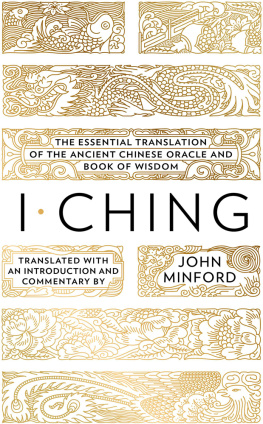

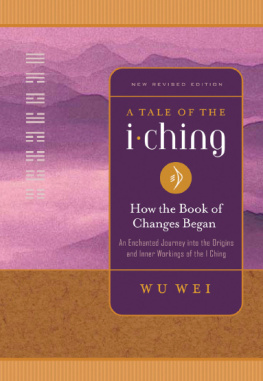
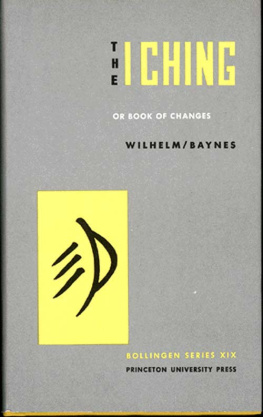

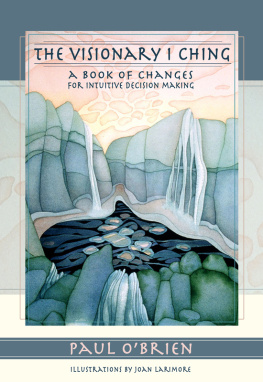
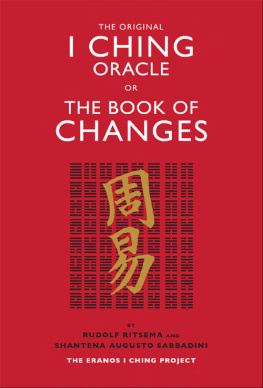
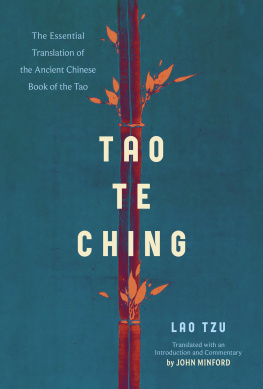
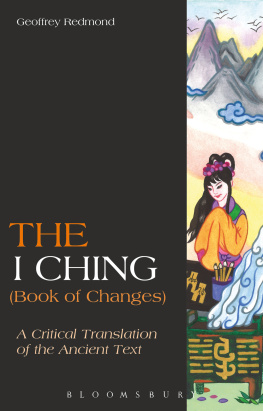
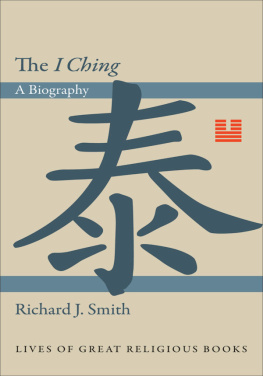

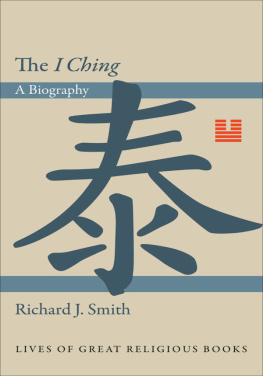




 USA | Canada | UK | Ireland | Australia | New Zealand | India | South Africa | China penguin.com A Penguin Random House Company First published by Viking Penguin, a member of Penguin Group (USA) LLC, 2014 Translation, introduction and commentary copyright 2014 by John Minford Penguin supports copyright. Copyright fuels creativity, encourages diverse voices, promotes free speech, and creates a vibrant culture. Thank you for buying an authorized edition of this book and for complying with copyright laws by not reproducing, scanning, or distributing any part of it in any form without permission. You are supporting writers and allowing Penguin to continue to publish books for every reader. Frontispiece calligraphy by Jao Tsung-yi Other calligraphy by Liao Hsintien LIBRARY OF CONGRESS CATALOGING-IN-PUBLICATION DATA Yi jing. English.
USA | Canada | UK | Ireland | Australia | New Zealand | India | South Africa | China penguin.com A Penguin Random House Company First published by Viking Penguin, a member of Penguin Group (USA) LLC, 2014 Translation, introduction and commentary copyright 2014 by John Minford Penguin supports copyright. Copyright fuels creativity, encourages diverse voices, promotes free speech, and creates a vibrant culture. Thank you for buying an authorized edition of this book and for complying with copyright laws by not reproducing, scanning, or distributing any part of it in any form without permission. You are supporting writers and allowing Penguin to continue to publish books for every reader. Frontispiece calligraphy by Jao Tsung-yi Other calligraphy by Liao Hsintien LIBRARY OF CONGRESS CATALOGING-IN-PUBLICATION DATA Yi jing. English.